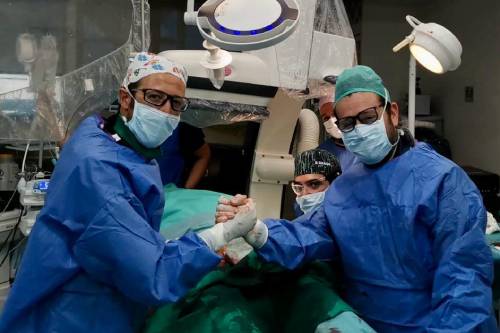
The knee is an important joint and, because it supports weight, it can be susceptible to wear. If your knee has suffered a severe injury and because of that your knee is damaged or you suffer from severe arthritis, it will be difficult for you to perform daily activities such as going up and down stairs, walking, etc... Even when you are resting, you may feel pain in your knee. For this reason, your surgeon may recommend that you have a knee replacement.
How is knee replacement performed?
Your surgeon will make an incision about 20 to 25 centimeters over your knee to open it. The surgeon will then remove the kneecap and cut off the ends of the femur and tibia to accommodate the replacement piece. He will cut the lower part of the kneecap in order to prepare it for the new pieces that will be stuck there. He will attach the two parts of the prosthesis to the bones. One part will be attached to the end of the femur and the other will be attached to the end of the tibia. The pieces can be fixed using cement or screws and will repair the muscles and tendons around the new joint and close the surgical incision. This surgery usually takes about 2 hours.
Riesgo de la operación
As with all procedures, this carries some risks and complications.
Common
- Pain: After the operation you will notice that the area is sore, over time the pain will fade. If the pain persists, call one of the doctors so that they can give you antibiotics.
- Bleeding: Sometimes a blood transfusion is required.
- Deep Vein Thrombosis: A blood clot in a vein. The risks of developing DVT are higher after any surgery. Your surgeon may give you medicine to try to limit your risk of DVT. Starting to walk as soon as possible is one of the best ways to prevent blood clots from forming.
- Stiffness: You may feel some stiffness in the operated area, but physical therapy will reduce stiffness.
- Wear of the prosthesis: knee implants usually last for many years, but in some cases they wear out, in this case talk to your doctor.
Less Common
-
Infection: The area where they have performed the operation may become painful or red, this may be signs of infection it may be necessary to take antibiotics to cure these infections.
Rare
- Pulmonary Embolism: Pulmonary embolism is a blood clot that affects the lungs.
- Altered Length: After the operation, it may appear to have one leg shorter than the other.
- Altered wound healing: The wound may become red, thickened, and painful (keloid scar), especially in Afro-Caribbean patients.
- Dislocation of the joint: If this occurs, the joint can usually be replaced without the need for surgery. Sometimes this is not possible, and an operation is required.
- Damage to the nerves: There is a risk of damaging the nerves in the knee. There may also be damage to the perineal nerve, which can cause temporary or permanent weakness in the lower leg.
- Bone Damage-The bone may break when the prosthesis is inserted. This may require repair, either at the same time or at a later operation.
- Damage to blood vessels: The vessels in the back of the knee can rarely be damaged. may require more surgery.























